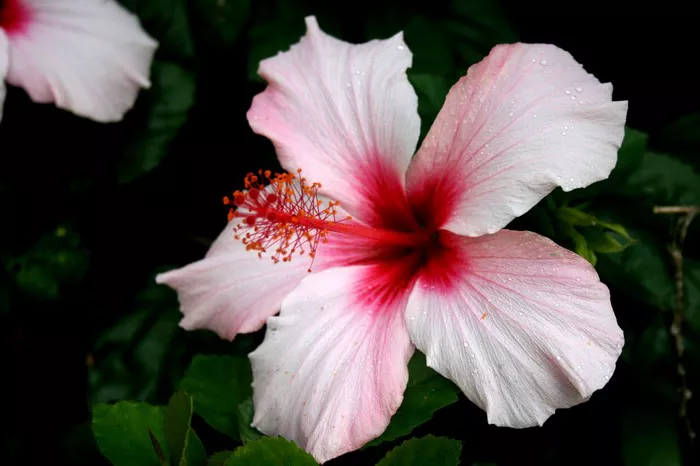Hibiscus flowers, with their vibrant colors and captivating beauty, have enchanted gardeners and flower enthusiasts for centuries. Belonging to the genus Hibiscus, these blossoms exhibit a remarkable diversity in appearance, size, and growing conditions. From tropical regions to temperate climates, hibiscus species thrive in various environments, each boasting its unique characteristics and charm. In this comprehensive guide, we delve into the mesmerizing world of hibiscus flowers, exploring the multitude of types and varieties that grace gardens, landscapes, and botanical collections worldwide.
Before we embark on our journey to uncover the different types of hibiscus flowers, it’s essential to understand the basic characteristics and taxonomy of this fascinating genus. Hibiscus is a genus of flowering plants in the family Malvaceae, comprising several hundred species distributed across the globe. These plants are renowned for their large, showy flowers, which typically feature five petals and a prominent central stamen column.
Hibiscus flowers exhibit a wide range of colors, including vibrant shades of red, pink, orange, yellow, and white, often with contrasting or variegated patterns. The flowers may be single, double, or multi-layered, adding to their visual appeal. Additionally, hibiscus plants are known for their lush foliage, with leaves varying in shape, size, and texture, depending on the species.
Classification of Hibiscus Flowers
The taxonomy of hibiscus plants is complex, with numerous species, hybrids, and cultivars recognized by botanists and horticulturists worldwide. While it’s challenging to provide an exhaustive list of all hibiscus types, we can categorize them broadly based on their characteristics, growth habits, and geographical origins.
1. Tropical Hibiscus (Hibiscus rosa-sinensis): One of the most popular and widely cultivated hibiscus species, the tropical hibiscus is native to warm climates and is prized for its large, flamboyant flowers. These flowers come in an array of colors, ranging from vibrant reds and pinks to softer pastel hues. Tropical hibiscus plants are often grown as ornamental shrubs or small trees, prized for their ability to thrive in containers or as landscape specimens in tropical and subtropical regions.
2. Hardy Hibiscus (Hibiscus moscheutos): Also known as swamp or marsh hibiscus, this species is native to North America and is well-adapted to wetland habitats. Hardy hibiscus plants are characterized by their large, dinner plate-sized flowers, which can be shades of pink, red, or white. Unlike tropical hibiscus, hardy hibiscus is a herbaceous perennial, dying back to the ground in winter and regrowing from the roots in spring. These plants are popular choices for wetland gardens and landscape borders in temperate regions.
3. Native Hibiscus Species: Various hibiscus species are indigenous to different parts of the world, including Africa, Asia, Australia, and the Americas. These native species exhibit diverse growth habits, flower colors, and environmental requirements, reflecting the ecological diversity of their habitats. Examples include the African rosemallow (Hibiscus acetosella), Hawaiian hibiscus (Hibiscus arnottianus), and Australian native hibiscus (Alyogyne huegelii), each with its unique charm and cultural significance.
4. Hybrid Varieties: With the advent of modern breeding techniques, horticulturists have developed countless hybrid hibiscus varieties, combining traits from different species to create plants with desired characteristics. Hybrid hibiscus varieties may exhibit improved flower size, color intensity, disease resistance, or cold hardiness, making them prized additions to gardens and landscapes worldwide. Popular hybrid groups include the Rose of Sharon (Hibiscus syriacus) cultivars and the prolific Hibiscus rosa-sinensis hybrids bred for their ornamental value.
Cultivation and Care
Regardless of their type or variety, hibiscus plants share similar cultivation requirements, although specific needs may vary depending on the species and growing conditions. Here are some general guidelines for successfully growing and caring for hibiscus flowers:
1. Sunlight: Most hibiscus species prefer full sun, although some varieties, particularly tropical species, may benefit from partial shade in extremely hot climates.
2. Watering: Adequate moisture is essential for healthy hibiscus growth, especially during the growing season. However, hibiscus plants are susceptible to root rot if overwatered, so it’s crucial to ensure well-draining soil and avoid waterlogged conditions.
3. Soil: Hibiscus plants thrive in fertile, well-draining soil with a slightly acidic to neutral pH. Amending the soil with organic matter, such as compost or aged manure, can improve soil structure and fertility.
Fertilization: Regular fertilization is key to promoting robust growth and abundant flowering in hibiscus plants. Use a balanced, slow-release fertilizer formulated for flowering plants, applying it according to the manufacturer’s instructions.
4. Pruning: Pruning helps maintain the shape and size of hibiscus plants, encourages branching, and stimulates flower production. Remove dead or diseased branches, as well as spent flowers, to promote healthy growth and prevent pest and disease problems.
5. Protection from Frost: While tropical hibiscus varieties are sensitive to frost and cold temperatures, hardy hibiscus species are more tolerant of chilly conditions. In regions where frost is a concern, consider mulching around the base of the plant and providing winter protection, such as covering with a frost cloth or moving container-grown specimens indoors.
By following these guidelines and paying attention to the specific needs of each hibiscus type, gardeners can enjoy the beauty and splendor of these captivating flowers year-round.
Conclusion
Hibiscus flowers represent a fascinating tapestry of colors, forms, and cultural significance, captivating enthusiasts and gardeners around the world. From the iconic tropical hibiscus with its flamboyant blooms to the hardy marsh hibiscus that thrives in wetland habitats, the diversity of hibiscus species and varieties offers endless possibilities for garden design, landscape enhancement, and botanical exploration.
As we’ve explored in this comprehensive guide, hibiscus flowers encompass a vast array of types and varieties, each with its unique characteristics and growing requirements. Whether you’re drawn to the exotic allure of tropical blooms or the rugged beauty of native species, there’s a hibiscus plant to suit every taste and garden style.
So, whether you’re a seasoned horticulturist or an aspiring gardener, consider adding a touch of hibiscus magic to your outdoor space. With their stunning flowers, lush foliage, and easy-care nature, hibiscus plants are sure to bring joy and beauty to any garden or landscape setting.


